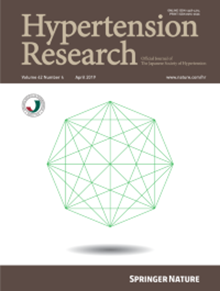Assessment of six surrogate insulin resistance indexes for predicting hypertension risk in rural Chinese adults
IF 4.3
2区 医学
Q1 PERIPHERAL VASCULAR DISEASE
引用次数: 0
Abstract
Insulin resistance (IR) is a complex abnormality and associated with hypertension. We aimed to assess the associations of six alternate IR measures and risk of hypertension, and to compare the predictive values for hypertension. We assessed 11,223 non-hypertensive Chinese adults enrolled in The Rural Chinese Cohort Study during 2007–2008. Six surrogate IR indexes were new visceral adiposity index (NVAI), Chinese visceral adiposity index (CVAI), weight-adjusted waist index (WWI), lipid accumulation product (LAP), triglyceride glucose (TyG) index, and visceral adiposity index (VAI). The relative risks (RR) and 95% confidence intervals (95% CI) of the six IR indicators and hypertension were estimated by using modified Poisson regression models with three adjusted models. During a median follow-up of 11.1 years, 3373 (30.05%) study participants developed hypertension. The cumulative incidence of hypertension showed an increasing trend with higher levels of all six IR surrogates. Significant associations of all the IR measures with incident hypertension were found in fully adjusted model, and the highest quartile group RRs (95% CIs) for hypertension were, 2.19 (1.88–2.55), 1.60 (1.42–1.81), 1.38 (1.25–1.53), 1.47 (1.31–1.65), 1.18 (1.04–1.34) and 1.25 (1.08–1.44) for NVAI, CVAI, WWI, LAP, TyG index and VAI, respectively, compared with lowest quartile group. Further, NVAI had the maximum predictive power for hypertension among six IR measures with the largest AUC of 0.706 (0.697–0.714). NVAI, CVAI, WWI, LAP, and TyG index were all independently associated with greater risk of incident hypertension, among which NVAI is the most powerful predictor for hypertension in rural Chinese adults.

求助全文
约1分钟内获得全文
求助全文
来源期刊

Hypertension Research
医学-外周血管病
CiteScore
7.40
自引率
16.70%
发文量
249
审稿时长
3-8 weeks
期刊介绍:
Hypertension Research is the official publication of the Japanese Society of Hypertension. The journal publishes papers reporting original clinical and experimental research that contribute to the advancement of knowledge in the field of hypertension and related cardiovascular diseases. The journal publishes Review Articles, Articles, Correspondence and Comments.
 求助内容:
求助内容: 应助结果提醒方式:
应助结果提醒方式:


